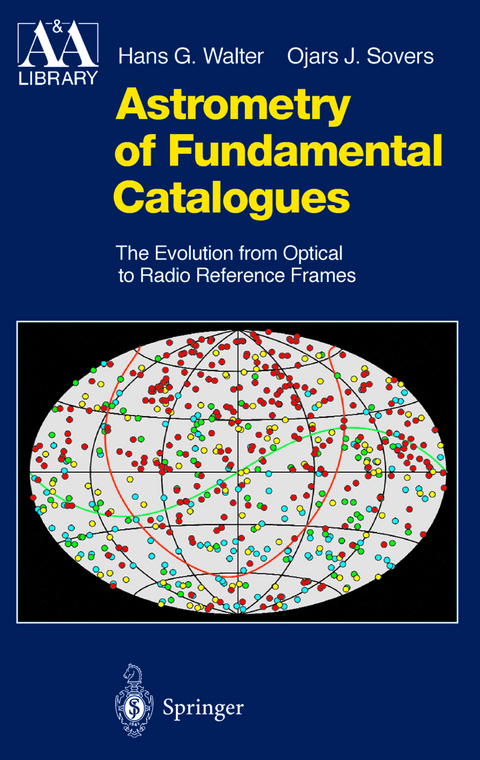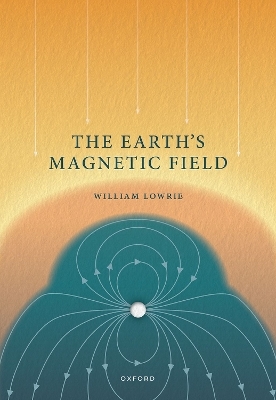
Astrometry of Fundamental Catalogues
Springer Berlin (Verlag)
978-3-540-67436-8 (ISBN)
1. Fundamental Catalogues.- 1.1 Introductory Remarks.- 1.2 Objectives of Fundamental Catalogues.- 1.3 Background of Conventional Fundamental Catalogues.- 1.4 Inertial Reference Systems and Frames.- 1.5 Precession and Nutation.- 1.6 Determination of the Luni-solar Precession.- 1.7 Conventional Stellar Celestial Reference Systems.- 1.8 Conventional Extragalactic Celestial Reference Systems.- 2. The Conventional Fundamental Catalogue FK5.- 2.1 Historical Review.- 2.2 The FK5 Celestial Reference System.- 2.3 First Principles of Compiling the FK5.- 2.4 Scope of the FK5 Work.- 2.5 Transition to the Standard Epoch J2000.0.- 2.6 Organization of the FK5.- 3. Contributions of Space Astrometry to Fundamental Catalogues.- 3.1 Astrometric Space Missions.- 3.2 The Astrometry Satellite Hipparcos.- 3.3 Observing Principle.- 3.4 Organization of the Data Reduction.- 3.5 From Photons to Grid Coordinates.- 3.6 Reduction to Reference Great Circles.- 3.7 Sphere Solution.- 3.8 Construction of the Hipparcos Catalogue.- 4. Astrometry with Radio Interferometers.- 4.1 Radio Astronomy.- 4.2 Techniques of Radio Interferometry.- 4.3 The Observables.- 4.4 Requirements for Astrometry.- 5. Fundamental Catalogues of Extragalactic Radio Sources.- 5.1 System Definition.- 5.2 Some Specific Features of the ICRS Definition.- 5.3 The Extragalactic System Versus the FK5 System.- 5.4 Building Blocks for Catalogue Establishment.- 5.5 Methods of Fundamental Catalogue Construction.- 6. The International Celestial Reference Frame: ICRF.- 6.1 The Principles of ICRF Construction.- 6.2 Appraisal of the Origins, Context, and Role of the ICRF.- 6.3 Accuracy Assessment of the ICRF.- 6.4 Future Maintenance of the ICRF.- 7. Hipparcos Catalogue Tie with Conventional Celestial Reference Frames.- 7.1 Link with the Extragalactic Reference Frame.- 7.2 Link with the FK5 Reference Frame.- 7.3 Testing the Rigidity of the FK5 Frame.- 7.4 Refinement of the Hipparcos Link with the Extragalactic Reference Frame.- 8. Future Prospects.- 8.1 Interdependence of Astrometry and Fundamental Catalogues.- 8.2 Prospective Observational Techniques.- 8.3 Prospects for the Celestial Reference Frame.- Epilogue.- References.
"Such a book was desired since long time and the present compact and, on the other side, very detailed and competent description, analysis and explanation of the basic part of astrometry fills a gap in the scientific literature and fulfils the needs of a variety of disciplines from geodesy up to fundamental physics. [...] One of the many advantages of this book is the fact that it is readable for and well understood by nonexperts in the field." (Journal of Geodesy, 2001)
"The time is propitious for this scholarly book. You can find in it the details of how this leap forward in positional astronomy was achieved and marvel at it." (The Observatory, 2001)
"I can only cite what Viktor Abalakin says in the Prologue: The book, revealing the fundamentals and principles of the art of Fundamental Catalogue construction on the basis of processing optical observations of stars and radio measurements of extragalactic sources, is a timely manual of long-lasting value for everybody who is practically engaged in the field of Astrometry." (Astronomische Nachrichten, 2002)
"The most attractive aspect of Walter and Sober's book is the attempt of erecting a bridge between the traditional optical astrometry and the newborn radio astrometry. The book is addressed mainly to the Astrometric public in general. It is composed of two complementary parts dedicated to a detailed description of both observation methods, and the techniques employed in the compilation of the so-called fundamental reference systems [...] For an Astrometry expert, the book could be separated in two volumes, his attention being raised by the complementary part. The actual unified release, however, has certainly a place in any Astronomy bookshelf, even in an amateur's one, as a rich reference source on all questions concerning reference frames and systems." (Celestial Mechanics and Dynamical Astrometry, 2003)
| Erscheint lt. Verlag | 26.7.2000 |
|---|---|
| Reihe/Serie | Astronomy and Astrophysics Library |
| Zusatzinfo | XIV, 233 p. |
| Verlagsort | Berlin |
| Sprache | englisch |
| Maße | 155 x 235 mm |
| Gewicht | 434 g |
| Themenwelt | Naturwissenschaften ► Geowissenschaften ► Geophysik |
| Naturwissenschaften ► Physik / Astronomie ► Astronomie / Astrophysik | |
| Schlagworte | Astrometrie • Astrometry • Astrometry by Hipparcos • Astrometry with Radio • Frame Maintenance • Fundamental Catalogues • Hipparcos catalog • Interferometers • Radio interferometry • Radio/Optical Frames • Satellite • space astrometry |
| ISBN-10 | 3-540-67436-5 / 3540674365 |
| ISBN-13 | 978-3-540-67436-8 / 9783540674368 |
| Zustand | Neuware |
| Informationen gemäß Produktsicherheitsverordnung (GPSR) | |
| Haben Sie eine Frage zum Produkt? |
aus dem Bereich


